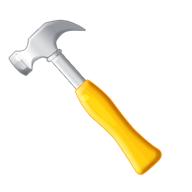One Simple Step that Improves Manufacturing Productivity
Your shop floor hides dangers that eliminate more than 13 hours of productivity each week for every employee. Learn how you can quickly improve...
Each year there is an inevitable flurry of predictions and lists – speculation on the New Year and analysis of the old. I’ll admit, it’s fun – the predictions and lists have become an annual tradition much like holiday cards and champagne toasts.
But this year, we decided to break the tradition, step back and take a look at our predictions for the previous year before offering our predictions for 2014.
 Manufacturing Growth and Capital Expenditures?
Manufacturing Growth and Capital Expenditures?We predicted moderate growth in 2013, and we’re seeing proof of that growth even now. In August, the manufacturing sector grew at its fastest pace in more than two years, with continued growth throughout Q4.
Capital expenditures are always a little trickier to predict and track. But, a number of businesses are already predicting increased capital expenditures for 2014 – including Apple, who increased their spending from $7 billion to $11 billion.
Overall, the global economy benefitted from increased corporate spending and manufacturing growth in 2013.
In 2012, we predicted a number of factors would pressure American Manufacturing, and we certainly saw that. We mentioned the need for a skilled labor force, increased productivity and improved quality – but other factors added to the pressure in surprising ways, such as a surge in shale gas drilling that is helping fuel a resurgence in American industry, and an increase in automation driving the need for a skilled labor force.
We also saw a trend in “reshoring” (or bringing their manufacturing to America) from companies such as Ford Motor, GE and NCR. In a recent survey of manufacturers, 54% said they were planning to or considering a move to reshore, up nearly 20% from a survey earlier in 2013. American manufacturing is certainly still in a transition, but the future is looking much brighter.
We saw the growing importance of quality as a trend for paperless manufacturing in 2013. In fact, quality is a driving reason companies are turning back to America for manufacturing. Companies such as Procter & Gamble use innovations in the manufacturing process to not only improve quality, but drive business growth.
This year, CIMx saw a number of companies turn to MES and paperless manufacturing to not only improve production, but improve quality. Companies have seen that process improvement programs such as Lean and Six Sigma are not enough. Sustainable improvement can only be achieved with the real-time data collection and process control made possible with paperless manufacturing.
 Is Manufacturing Going Mobile?
Is Manufacturing Going Mobile?We predicted increased interest in mobile manufacturing in 2013. This year, a number of companies began marketing mobile “apps” for manufacturing. Manufacturers have a wealth of mobile manufacturing apps options, including role-based apps shown to improve production by 5% to 10% and process improvement apps on the Google Play store.
Manufacturers are still tentatively approaching mobile applications on the shop floor. More and more, the benefits of mobile manufacturing are making an impact on the manufacturing community, but companies recognize it’s not enough to give a worker a tablet and expect production to improve. Detailed production plans won’t fit on a smart phone screen, no matter how good the app is. Companies are discovering the key to benefitting from mobile manufacturing is finding the right app, the right tool, and rolling it out to the shop floor appropriately.
We also made a (very) safe prediction that new solutions and new options would roll out the industry in 2013, and even we were surprised in how this prediction played out.
Who would have thought GE would turn to 3D Printers for jet engines? Or that NASA and Aerojet Rocketdyne would successfully test fire a rocket engine partially built from 3D Printer technology? Or that we are no longer looking at robots to replace humans on the shop floor, but to enhance them.
In paperless manufacturing, more and more companies are rejecting the old way of implementing a system (long development, expensive service costs and disruptive implementation) for new, lower-cost solution focused methods such as phased implementation and off-the-shelf Web 2.0 solutions. The industry and technology is evolving too quickly to expect a 2-3 year development project to deliver an acceptable ROI. Solutions should begin delivering an ROI a few months after implementation.
This time of year, prognosticators are common, but I would guess most are looking ahead, not behind. Once you’ve put away the bottle of champagne and the New Year’s parties are over, take a moment to reflect on where you’ve been and where you and your manufacturing business are going. Many times, you’ll be surprised at what you discover. Our predictions in 2013 weren’t meant to shock the industry, but it’s interesting and enlightening to see how they played out during the year.
Next week, we’ll look ahead to 2014 and offer our predictions for the New Year. And, as always, if you have a question let us know… we’re always happy to help.
Your shop floor hides dangers that eliminate more than 13 hours of productivity each week for every employee. Learn how you can quickly improve...

1 min read
Many paperless manufacturing projects fail not due technology, but cultural or personality problems. We show how to overcome the problems and find...

1 min read
Most manufacturers know quality and efficiency would suffer if they asked their shop floor to use the wrong tool, but all too often that’s what...